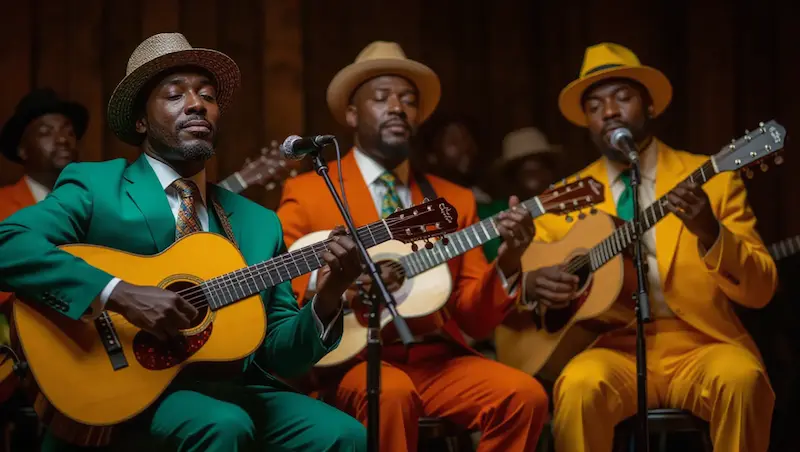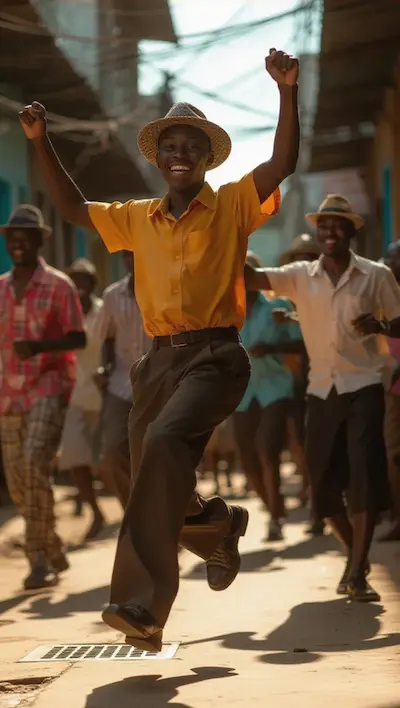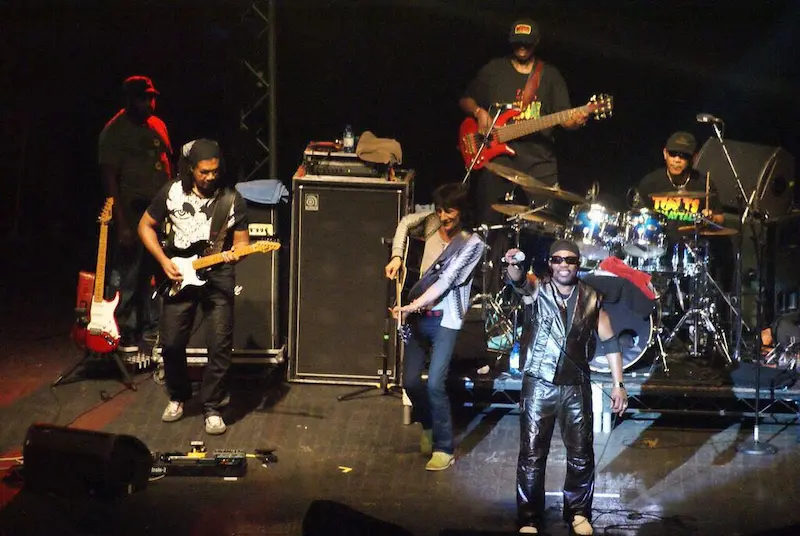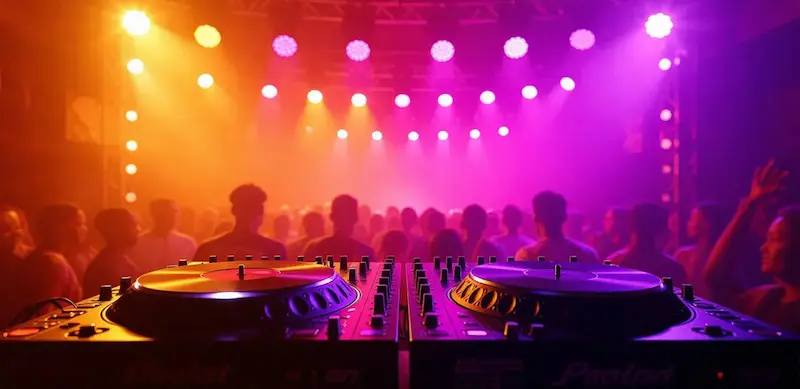Reggae History: Mento to Dancehall & Beyond

This timeline of reggae music showcases the genre’s remarkable evolution.
Reggae is more than a music genre—it’s the sound of Jamaica’s soul. It tells stories of freedom, struggle, and cultural pride. But reggae didn’t just appear overnight. It evolved through decades of rhythmic revolutions—from mento’s rural folk beats to ska’s upbeat horns, rocksteady’s soulful grooves, and reggae’s signature one-drop rhythm.
This history of reggae music timeline walks you step by step through the journey of how a small island’s music became a global cultural movement.

1950s: Mento – Jamaica’s Folk Foundation
Before reggae, there was mento, a lively Jamaican folk style blending African and European influences. It was the soundtrack of village life—played at street parties, markets, and rural celebrations.
What it sounded like:
- Acoustic instruments like banjo, guitar, rumba box (a giant thumb piano), and hand drums
- Light, playful rhythms with catchy melodies
- Lyrics full of humor, satire, and social commentary
Themes: Love, local gossip, political irony, everyday Jamaican life
Key Artists: Lord Flea, Louise Bennett, The Jolly Boys
🎧 Recommended listen: “Linstead Market” – The Jolly Boys ….
If you’d like a deep, extended history covering every era, artist, and innovation, explore The Complete Evolution of Reggae Music for a detailed breakdown.
👉 Want more on Jamaica’s pre-reggae roots? Explore Mento & Folk Music Origins →
Late 1950s – Early 60s: Ska – The Sound of Independence

When Jamaican musicians started experimenting with American rhythm and blues on local sound systems, ska was born. It became the soundtrack of Jamaica’s independence in 1962.
What it sounded like:
- Fast, upbeat tempos with walking bass lines
- Offbeat “skank” guitar chops
- Horn sections (sax, trumpet, trombone) leading the melodies
- A 4/4 beat emphasizing beats 2 and 4
Cultural backdrop: Ska reflected optimism & pride in a newly independent Jamaica.
Key Artists: The Skatalites, Prince Buster, Derrick Morgan, Desmond Dekker
Famous ska songs:
- “Simmer Down” – The Wailers
- “Guns of Navarone” – The Skatalites
- “One Step Beyond” – Prince Buster
💡 Fun Fact: Ska clubs like Kingston’s Forerunner Club were packed with dancers doing the “ska shuffle,” a precursor to later reggae dance styles.
👉 Read more about Ska’s Jazz-Influenced Rhythms →

Mid-60s: Rocksteady – Slowing It Down
By 1966, the intense Kingston heat made it hard to dance to the fast tempos of ska. Musicians slowed things down, creating rocksteady, a smoother, more soulful sound.
What it sounded like:
- Slower tempos than ska
- Heavy, prominent basslines
- Electric organ replacing piano
- Vocal harmonies inspired by Motown & American soul
Themes: mostly romance and love, but also escalating social unrest in Kingston’s streets
Key Artists: Alton Ellis, The Heptones, The Paragons
Classic rocksteady tracks:
- “Girl I’ve Got a Date” – Alton Ellis
- “On the Beach” – The Paragons
- “Rude Boy Gone A Jail” – The Clarendonians
🎧 Essential listen: “Rocksteady” – Alton Ellis ….
👉 Want the deep dive? Learn more about Rocksteady’s Soulful Era →

Late 60s: Reggae is Born

In 1968, Toots & The Maytals released “Do the Reggay,” coining the word “reggae.” It was the next evolution, keeping rocksteady’s vibe but adding deeper bass grooves and a more syncopated drum beat.
Sound innovations:
- The one-drop rhythm—emphasizing the 3rd beat & leaving the 1st beat empty
- The guitar “skank”—short, scratchy chords on beats 2 & 4
- Organ “bubble” shuffle patterns
- Less horns, more rhythm-driven
Key Artists: Toots & the Maytals, Desmond Dekker, Jimmy Cliff
Hit tracks:
- “Israelites” – Desmond Dekker
- “Do the Reggay” – Toots & The Maytals
- “Nanny Goat” – Larry Marshall
👉 Explore the Birth of Reggae Sound →
1970s: Roots Reggae – Consciousness & Protest

The 1970s saw reggae deepen into roots reggae, a spiritual and political movement inspired by the Rastafari faith. Lyrics spoke of African heritage, liberation, and resistance against Babylon (oppression).
What it sounded like:
- Slow, meditative one-drop beats
- Deep basslines that feel “earthy” and hypnotic
- Nyahbinghi drumming (Rasta ceremonial drums)
- Soulful, haunting melodies
Key Artists: Bob Marley & The Wailers, Peter Tosh, Burning Spear, Culture
Iconic songs:
- “Get Up Stand Up” – Bob Marley
- “Equal Rights” – Peter Tosh
- “Marcus Garvey” – Burning Spear
✨ Why it mattered: Roots reggae connected the African diaspora, giving hope to marginalized people everywhere.
Roots reggae’s messages of freedom and African identity were deeply influenced by the Rastafari faith. We explore this powerful connection in Reggae and Rastafarianism: The Revolutionary Soul of a Global Movement.
👉 Dive into Roots Reggae & Rastafari Connection →
1970s: Dub – Studio Experiments & Remix Culture
While roots reggae was spiritual, dub was technical. Producers like King Tubby and Lee “Scratch” Perry began remixing instrumental B-sides with echo, reverb, and delay, creating psychedelic soundscapes.
Dub innovations:
- Stripped-down tracks with heavy bass & drums
- Vocals fading in & out
- Creative use of studio effects
Dub influenced not just reggae, but hip-hop, EDM, and modern remix culture.
👉 Want more? Discover How Dub Revolutionized Sound →

Late 70s – Early 80s: Dancehall – DJ Culture Takes Over

By the late 1970s, reggae shifted again. Dancehall brought the focus back to the sound system party scene, with DJs (“toasters”) chatting over instrumental riddims.
What it sounded like:
- Faster rhythms than roots reggae
- DJs hyping the crowd with improvised lyrics
- More party-focused themes (love, rivalry, street life)
Key DJs: U-Roy, Big Youth, Yellowman
Then came the digital revolution; Wayne Smith’s “Under Mi Sleng Teng” was the first totally digital reggae riddim, created in 1985 with a Casio keyboard, forever altering the game.
👉 See how Dancehall Changed Reggae Forever →
1990s – 2000s: Reggae Fusion & Global Spread
Hip-hop, R&B, pop, rock, and Latin music all merged with reggae as it expanded over the world.
Key fusion artists:
- Shaggy (“Boombastic,” “It Wasn’t Me”)
- Sean Paul (“Get Busy”)
- Damian Marley (“Welcome to Jamrock”)
- Maxi Priest (reggae + R&B)
Latin connection: Puerto Rico’s reggaeton was influenced by Panama’s Jamaican dancehall.
👉 Learn about Global Reggae Fusion →
Today: Revival & Resistance
In the 2020s, reggae is experiencing a roots revival with artists combining conscious lyrics and modern production.
Revival artists: Chronixx, Protoje, Kabaka Pyramid, Koffee
Themes: Sustainability, African unity, resistance against inequality
Modern reggae still carries the same message of love, unity, and resilience, proving reggae is timeless.
👉 See Reggae’s Modern Renaissance →
Why Reggae’s History Matters
From mento’s acoustic folk tunes to ska’s energetic horns, from roots reggae’s spiritual heartbeat to dancehall’s digital riddims, reggae has always evolved while staying true to its Jamaican roots.
It’s more than music. It’s:
- A voice for the marginalized
- A cultural bridge between Africa & the diaspora
- A global movement for peace & unity
Today, reggae’s DNA lives on in hip-hop, Afrobeats, reggaeton, pop, and beyond.
Want the FULL deep-dive? Check out [The Complete Evolution of Reggae Music →]

